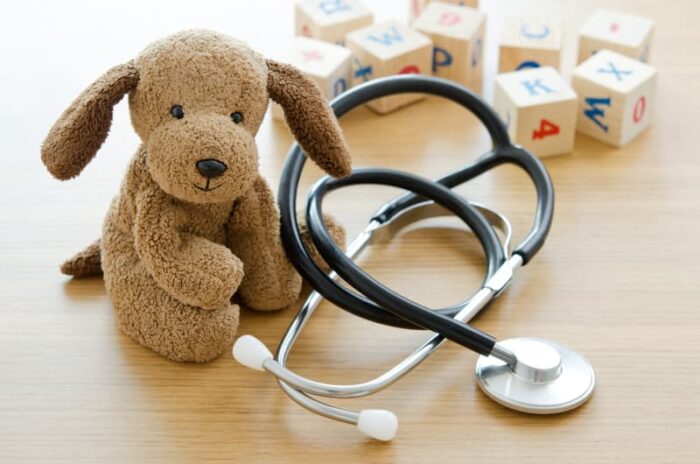- Calls to this hotline are currently being directed to Within Health or Eating Disorder Solutions
- Representatives are standing by 24/7 to help answer your questions
- All calls are confidential and HIPAA compliant
- There is no obligation or cost to call
- Eating Disorder Hope does not receive any commissions or fees dependent upon which provider you select
- Additional treatment providers are located on our directory or samhsa.gov
Can Primary Care Providers Treat Pediatric Eating Disorders?

Majority of adolescence suffering from eating disorders present first to their primary care provider [1]. This allows for primary care providers to be the first line of defense in early diagnosis of eating disorders.
Early diagnosis is imperative in reducing the risk of mortality and serious health consequences. Unfortunately, fast paced primary care settings may limit time necessary to identify signs and symptoms of eating disorders [1].
50% of patients presenting with symptoms in a medical setting go undetected [1] and only 22% of youth with eating disorders receive treatment [3].
So the question is do primary care providers have the time, knowledge and resources to effectively diagnosis and treat pediatric eating disorders?
Factors Necessary to Identify Pediatric Eating Disorders
Time to Assess
Majority of providers feel there is not a simple method to identify eating disorders in today’s youth, nor is there sufficient time [2]. With the number of screenings providers have to complete, there is little to no time left during brief visits to effectively identify eating disorders.
One study found that 68% of primary care providers screened for eating disorders only, when the eating disorder was associated with the presenting problem [2].
Research shows health providers identify about 10% of binge-eating disorders, 50% of patients with anorexia nervosa and less than 50% of patients with bulimia nervosa [3].
Primary care provider’s time with each patient is limited due to high demand in the primary care setting. Providers recognize there are screenings to help identify eating disorders. Although, the few screenings tools for adolescence are lengthy and difficult to integrate into practice [2].
Knowledge to Detect
When a provider does not specialize in a specific illness it can be easy to overlook signs and symptoms. This can be due to multiple factors including limited education around and exposure to eating disorders.
In one study, less than half of primary care providers reported receiving adequate training on eating disorders during residency and more than 70% reported the need for more training [2].
In the same study, less than half of the participating physicians felt they possessed adequate skills to intervene with eating disorders in their current practice [2].
Additionally, eating disorders are secretive, leading to adolescence hiding challenges and behaviors. Using a mental health screening tools, providers can identify risk factors for eating disorders including depression, anxiety, bullying, trauma, substance use and more [3].
If time permits and risk factors can be identified, this may prompt the provider to continue exploration of specific risk factors. This may also encourage collaboration with a multidisciplinary team to support mental health [3].
Factors Necessary to Treat Pediatric Eating Disorders
Time to Provide Treatment
Treating pediatric eating disorders is complex and challenging. Complexity of treatment in adolescence often comes with resistance from patients and an added layer of managing family dynamics [2].
If primary care providers are already stretched thin with their current caseload they may be limited in the depth of care they can provide to patients and family. This supports the need again for a multidisciplinary team approach.
Without the necessary support, taking on more complex patients may lead any provider to emotional exhaustion due to increased time investment [2].
In a recent study, providers voiced a rational ambivalence related to offering more screenings, interventions and management of eating disorders due to limited time [2].
These provided reported understanding the importance of providing treatment while also expressing concern about further stretching their time to address complex and challenging patients [2].
Collaborative and Treatment Resources
There is a clear consensus that resources currently available to care for adolescent eating disorders are insufficient [2]. Due to the complexity of eating disorders primary care providers may again struggle to give effective care on their own.
Depending on the location of a primary care practice referral sources may be scarce. When treating eating disorders, providers specializing in eating disorders and higher levels of care are often necessary.
Rural areas may lack local treatment options. Due to the current demand for treatment, as a result of the COVID-19 pandemic, options have decreased [2]. This leaves the limited number of specialist we currently have unable to meet the demand.
In a recent study, providers expressed dissatisfaction related to the lack of resources for treatment of pediatric eating disorders. They also reported the lack of resources placing a burden on patients and family to explore treatment options outside of their region or state, away from their primary team [2].
Conclusion
The question, can primary care providers treat pediatric eating disorders, is complex. Recovery from an eating disorder is a long road that no provider should be expected to take on alone. The need for more support, time and resources is clear.
A team-based approach is necessary to provide adequate care for pediatric eating disorders. The team should include clinical professionals specializing in eating disorders.
Professionals on the team may include therapists, psychiatrists, registered dietitians, and primary care providers. Together the team can address all emotional and physical aspects.
If one member of the team in missing there will be increased demand placed on other team members, who may not be best equipped to mange those aspects.
When it comes to eating disorders, no one individual can act as a treatment team. Recovery requires a team with the patient and their best interests at the center.
Resources:
[1] Katzman, D. K., Peebles, R., Sawyer, S. M., Lock, J., & Le Grange, D. (2013). The Role of the Pediatrician in Family-Based Treatment for Adolescent Eating Disorders: Opportunities and Challenges. Journal of Adolescent Health, 53(4), 433–440. https://doi.org/10.1016/j.jadohealth.2013.07.011 [2] Lebow, J., Narr, C., Mattke, A., Gewirtz O’Brien, J. R., Billings, M., Hathaway, J., Vickers, K., Jacobson, R., & Sim, L. (2021). Engaging primary care providers in managing pediatric eating disorders: a mixed methods study. Journal of Eating Disorders, 9(1). https://doi.org/10.1186/s40337-020-00363-8 [3] Russon, J., Mensinger, J., Herres, J., Shearer, A., Vaughan, K., Wang, S. B., & Diamond, G. S. (2019). Identifying Risk Factors for Disordered Eating among Female Youth in Primary Care. Child Psychiatry & Human Development, 50(5), 727–737. https://doi.org/10.1007/s10578-019-00875-8About the Author:
 Raylene Hungate, RD/N, LD/N is a registered dietitian dedicated to providing the utmost care and support to those struggling with mental health. As a supporter of the Health at Every Size movement and the idea that all foods fit, she is passionate about helping others explore a life full of nourishment and bursting with flavor.
Raylene Hungate, RD/N, LD/N is a registered dietitian dedicated to providing the utmost care and support to those struggling with mental health. As a supporter of the Health at Every Size movement and the idea that all foods fit, she is passionate about helping others explore a life full of nourishment and bursting with flavor.
As an eating disorder dietitian, Raylene works not only in Private Practice, but also as a dietitian for an eating disorder treatment center in Los Angeles, California. She finds great joy in guiding others through an empowering journey of self-discovery and healing.
The opinions and views of our guest contributors are shared to provide a broad perspective on eating disorders. These are not necessarily the views of Eating Disorder Hope, but an effort to offer a discussion of various issues by different concerned individuals.
We at Eating Disorder Hope understand that eating disorders result from a combination of environmental and genetic factors. If you or a loved one are suffering from an eating disorder, please know that there is hope for you, and seek immediate professional help.
Published June 11, 2021 on EatingDisorderHope.com
Reviewed & Approved on June 11, 2021, by Jacquelyn Ekern MS, LPC

